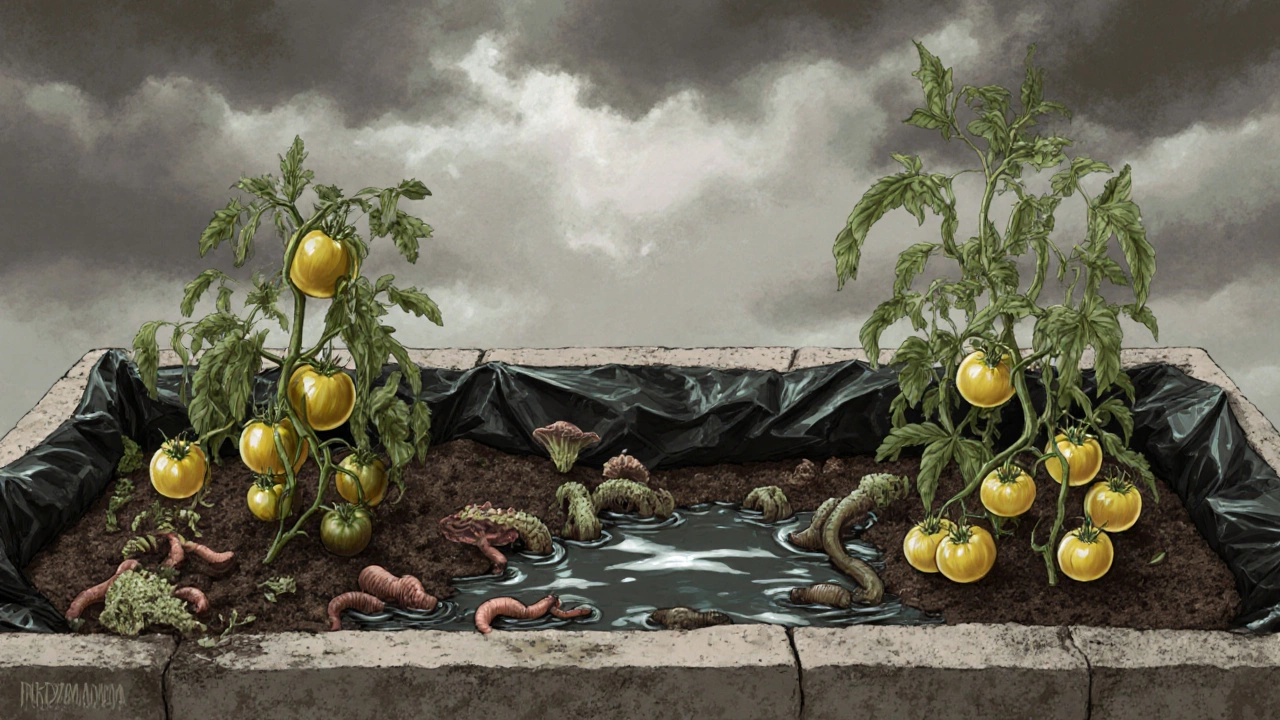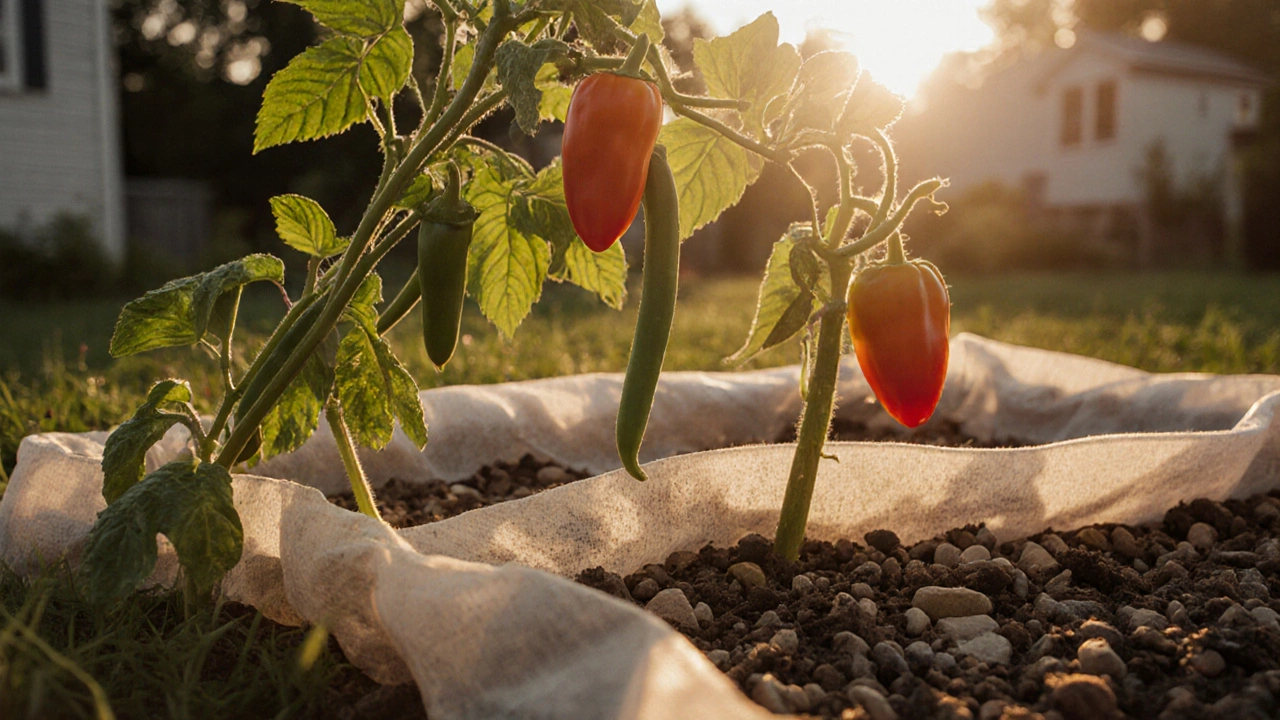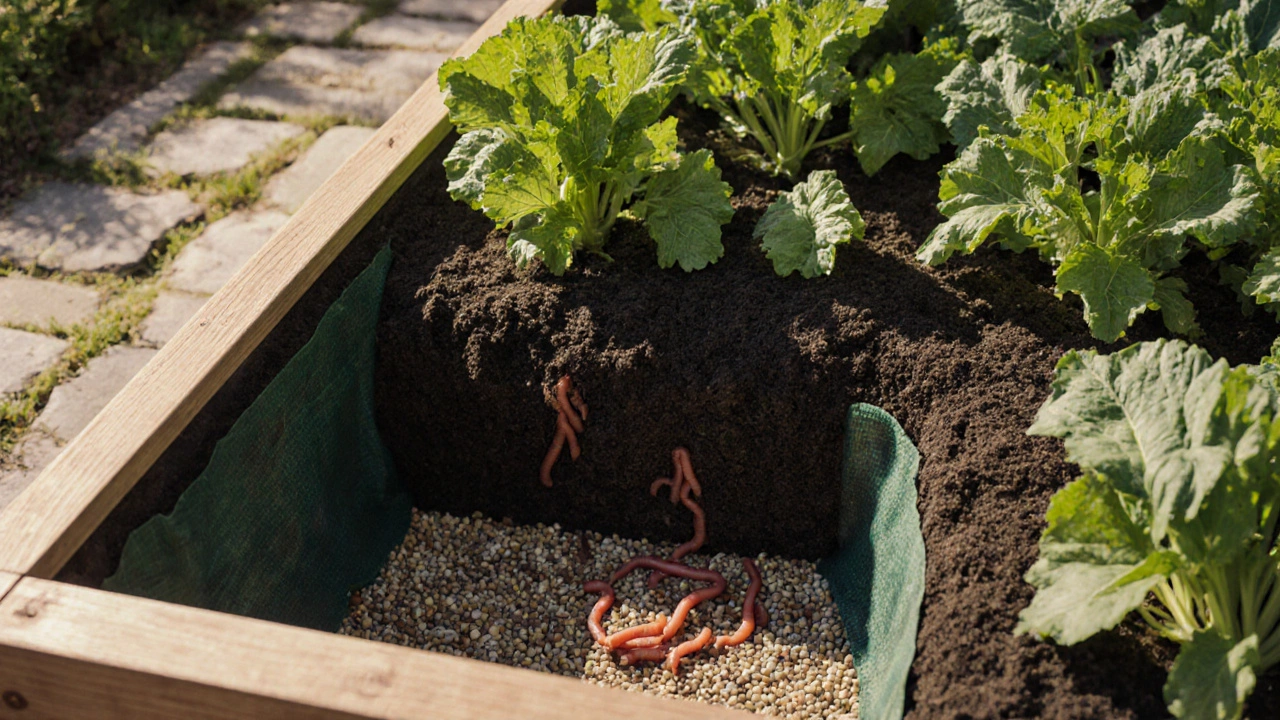Raised Bed Bottom Calculator
Do You Need a Bottom for Your Raised Bed?
This tool helps you decide based on your specific situation. Select your answers below to get personalized advice.
Your Best Approach
When you build a raised garden bed, one of the first questions that pops up is: do you put a bottom on it? It seems simple, but the answer isn’t just yes or no. It depends on where you live, what’s underneath your bed, and what you’re trying to grow. Many people assume a bottom is necessary-maybe because they’re used to planters indoors or on patios. But in the ground, things work differently.
Why People Think They Need a Bottom
Most folks imagine a raised bed like a big box you fill with soil. If you’re used to containers, you’d never leave the bottom open-water would drain out too fast, and soil would spill. So it feels natural to add something underneath: landscape fabric, plywood, plastic, even metal sheets. Some gardeners swear by it. They say it stops weeds from coming up, keeps critters out, or protects the soil from contamination. But here’s the problem: what works in a pot doesn’t always work in the ground.The Ground Is Alive-And It Should Stay That Way
Your garden soil isn’t just dirt. It’s a living system. Earthworms, fungi, bacteria, and tiny insects move through it. They break down organic matter, aerate the soil, and feed your plants. When you put a solid bottom in your raised bed, you cut off that connection. No more worms climbing up from below. No more natural drainage. No more nutrients cycling through the layers. In the UK, where rain is frequent and soils are often clay-heavy, blocking drainage can be a disaster. Water sits. Roots rot. Plants die. I’ve seen raised beds built with thick plywood bottoms that turned into swampy traps by April. The plants didn’t stand a chance.When a Bottom Actually Helps
There are real cases where a bottom makes sense. You don’t need one for most gardens-but you might need one for your situation.- If you’re building on concrete, asphalt, or a patio. No soil below means no natural drainage or root access. A layer of landscape fabric or coarse gravel at the bottom helps with water flow and prevents soil from washing out.
- If you’re worried about tree roots invading. In Brighton, where old oaks and maples spread roots like wild vines, a heavy-duty root barrier (like thick landscape fabric or a plastic liner) can protect your bed from being taken over.
- If your ground is contaminated. If you’re gardening on an old industrial site, near a busy road, or where pesticides were used years ago, a liner can act as a barrier. But even then, you’re better off adding 12-18 inches of clean soil on top than relying on a liner alone.
- If you’re keeping out moles or voles. These pests can tunnel up into your bed. A layer of hardware cloth (1/4-inch mesh) under the soil stops them without blocking water.
What Not to Use
Some materials sound like good ideas-but they’re traps waiting to happen.- Plastic sheeting. It looks waterproof, but it turns your bed into a bathtub. Water can’t escape. Roots suffocate. Mold grows. Avoid it.
- Cardboard or newspaper. These break down too fast. In six months, they’re gone. And if they’re too thick, they block water and roots from moving down. Use them only as a temporary weed barrier under soil, not as a bottom.
- Pressure-treated wood. If you’re lining the bottom with wood, make sure it’s untreated. Older treated wood can leach arsenic or copper into your soil. Even newer types aren’t safe for food crops.

The Best Alternative: Drainage Layer
Instead of a solid bottom, use a drainage layer. It’s simple, cheap, and works with nature, not against it. Start with 2-4 inches of coarse gravel or crushed stone at the very bottom. Then lay down a single layer of landscape fabric on top of that. Don’t let it touch the sides of the bed-just let it sit like a filter. Then add your soil mix on top. This setup lets water drain freely while keeping soil from washing into the gravel. It stops weeds from coming up from below without trapping moisture. It’s the method used by professional growers in the UK and across Europe.What About Weeds?
Weeds are the #1 reason people want a bottom. But a liner won’t stop them forever. Seeds blow in. Birds drop them. You’ll still get weeds on top. The real solution? Mulch. A 2-3 inch layer of straw, wood chips, or shredded leaves on top of your soil cuts weed growth by 80%. Add compost each spring, and your plants will outcompete weeds naturally.How High Should Your Bed Be?
Height matters more than a bottom. A bed that’s 12 inches tall gives roots plenty of space to grow downward into the native soil. At 18 inches, you’re basically creating a new soil profile. At 24 inches or higher, you might as well be building a container. If your bed is under 12 inches, you’re better off removing the top 6 inches of native soil and replacing it with quality mix. That’s more effective than lining the bottom.
Real-World Example: A Brighton Backyard
Last spring, a neighbor in Hove built a raised bed on top of compacted clay. She lined the bottom with plastic because she was afraid of waterlogging. By June, her tomatoes were yellowing. The soil stayed soggy. She pulled them out. This year, she rebuilt it: 18 inches tall, no bottom, 4 inches of gravel underneath, landscape fabric over the gravel, then a mix of topsoil, compost, and perlite. Her peppers are thriving. Her beans are climbing. No pests. No rot. Just good, healthy soil.Final Rule: Go Bottomless Unless You Have a Specific Reason
Most raised garden beds work best without a bottom. Let the earth breathe. Let water drain. Let worms do their job. Only add a barrier if you’re dealing with contamination, invasive roots, or hard surfaces. If you’re unsure, start without one. You can always add a drainage layer later. But once you seal the bottom with plastic or plywood, you’re stuck with the consequences.Quick Checklist: Do You Need a Bottom?
- Building on soil? → No bottom needed
- Building on concrete or paving? → Add gravel + fabric
- Worried about moles? → Hardware cloth under soil
- Contaminated ground? → 18+ inches of clean soil + optional barrier
- Just want to stop weeds? → Mulch on top, not a liner below
- Using plastic, cardboard, or treated wood? → Avoid it
Your garden doesn’t need a cage. It needs space, air, and connection to the earth. Skip the bottom unless you have a real problem. Let your plants grow deep, strong, and free.
Should I line the bottom of my raised garden bed with plastic?
No. Plastic traps water, suffocates roots, and creates rot. It’s a common mistake. Instead, use a layer of gravel and landscape fabric if you need drainage control. Plastic has no place in a healthy raised bed.
Can I use cardboard as a bottom for my raised bed?
Cardboard breaks down too quickly-usually within 3-6 months-and can block water flow if layered too thick. It’s fine as a temporary weed barrier under soil, but not as a permanent bottom. For long-term use, skip it and go with gravel and fabric.
Do raised garden beds need drainage holes?
Not if the bed is sitting on soil. Drainage happens naturally downward. If your bed is on concrete, add a 2-4 inch layer of gravel at the bottom to let water escape. Drainage holes in the sides or bottom aren’t necessary and can let soil wash out.
Will weeds grow up through my raised bed if there’s no bottom?
Weeds can come from seeds blown in by wind or carried by birds, not just from below. A bottom won’t stop them. The best defense is a thick layer of mulch (2-3 inches) on top of your soil. It blocks sunlight and keeps most weeds from sprouting.
How deep should my raised bed be without a bottom?
For most vegetables and herbs, 12 inches is the minimum. 18 inches is ideal. That gives roots room to reach down into native soil for moisture and nutrients. If your bed is less than 12 inches, consider removing the top layer of native soil and replacing it with quality mix.
